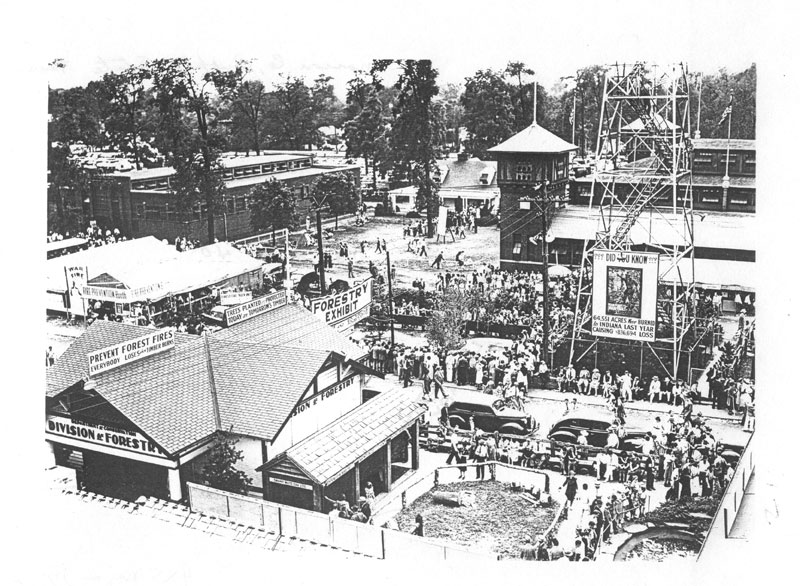On February 14, 1851, the Indiana General Assembly passed legislation for the encouragement of agriculture, which also created the State Board of Agriculture. The board first met on May 27, 1851, with Governor Joseph Wright as president, and appointed a committee to consider holding a state agricultural fair in the fall. The Board believed a State Fair would prominently position Indiana as only the sixth state in the nation to hold an annual state agricultural exposition. Its members later recommended waiting until fall 1852.
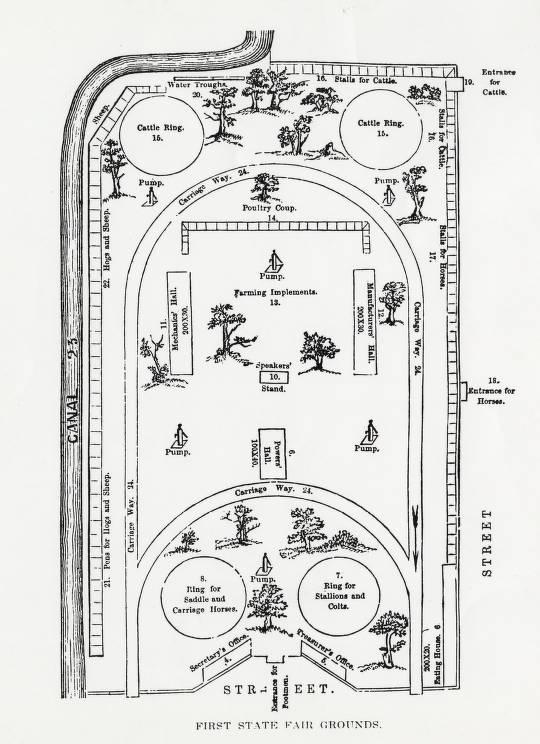
Conceived as a venue for the exchange of ideas and to stimulate improved agricultural productivity, the first Indiana State Fair ran October 20-22, 1852, at in Indianapolis. An estimated 30,000 people paid 20 cents each to see 1,365 exhibit entries featuring an array of agricultural products and machinery.
From the beginning, the fair focused on improved agriculture and stock production, highlighted the mechanical arts as well as farm technology, and offered plowing contests, horse pulls, and harness racing. A women’s department sponsored exhibitions and competitions in sewing, needlework, cooking and baking, and other domestic arts.
At the first Indiana State Fair, top prizes were awarded for Best Farmhouse Plans and Best Method of Reclaiming and Improving the Swamplands of Indiana. Other interesting prizes included Best False Teeth, Best Underwear, Best Coffin, and Best Artificial Limbs.
During its early years, the fair was held in different communities—Lafayette (1853), Madison (1854), Indianapolis (1855-1858), and New Albany (1859). In 1860, the State Board of Agriculture, with the financial assistance of Indianapolis-area railroads, bought approximately 30 acres on the old Northside called Otis Grove as a suitable permanent location for the fair. Bounded by Delaware, 19th , 22nd , and New Jersey streets, the area encompassed the present-day neighborhood.

However, in 1861, the board sought a new site for the fair upon the outbreak of the and the fairgrounds being requisitioned for military use. The Otis Grove grounds, renamed , were used by Indiana troops, housed Confederate prisoners of war, and served as the site for a Union hospital.
The State Fair returned to Military Park for the years 1862-1864. Fort Wayne and Terre Haute hosted the exhibition in 1865 and 1867, respectively. In 1868, the State Fair returned to its rebuilt Camp Morton location, which by 1872, included the imposing Grand Hall Building composed of one million bricks, designed by , for the 30-day fair and exposition.
During these years, however, the state board expressed increasing concern over the quality and reputability of sideshows, vendors, and auctioneer stands, which resulted in the licensing of exhibitors. In 1870, the board attempted to bar “all side shows, auction stands, fat women, white negroes, snake shows, and all classes of similar exhibitions,” demonstrating the rampant discrimination at play in sideshow and exhibitor culture that the state fair would grapple with for years to come.
With Indianapolis’ continued northward growth, the Board of Agriculture eventually found that it needed even more space for the annual fair. In November 1891, the board sold its Camp Morton grounds for $275,100 to three Indianapolis businessmen and purchased the Jay G. Voss farm, located two miles northeast of the Camp Morton grounds at East 38th Street and Fall Creek Parkway. In February 1892, the board hired the J. F. Alexander and Son architectural firm to supervise the construction of the fair’s facilities on the site’s 214 acres. The new fairgrounds, containing 72 buildings, a 6,000-seat grandstand, and a mile race track, officially opened on September 19, 1892.

Over the decades, the State Fair captured and showcased the latest in science and technology for fairgoers. Developments in led to the appearance of a dirigible (1906), monoplane demonstrations (1914), and hot-air balloons. The first annual balloon race was launched in 1975.
Growing public fascination with the automobile brought auto exhibits, auto polo (1918), and, in the 1930s, auto-daredevil thrill shows, and midget auto races. The Hoosier Hundred, a 100-mile dirt track race, premiered in 1953.
Another feature was the Better Babies Contest, begun in 1920 to encourage improved hygiene and education for young children. As the “better babies” movement encouraged scientific motherhood and infant hygiene as routes to human improvement, this contest also had negative connotations because of its connection to but by the early 1930s it had evolved into a regular exhibit.
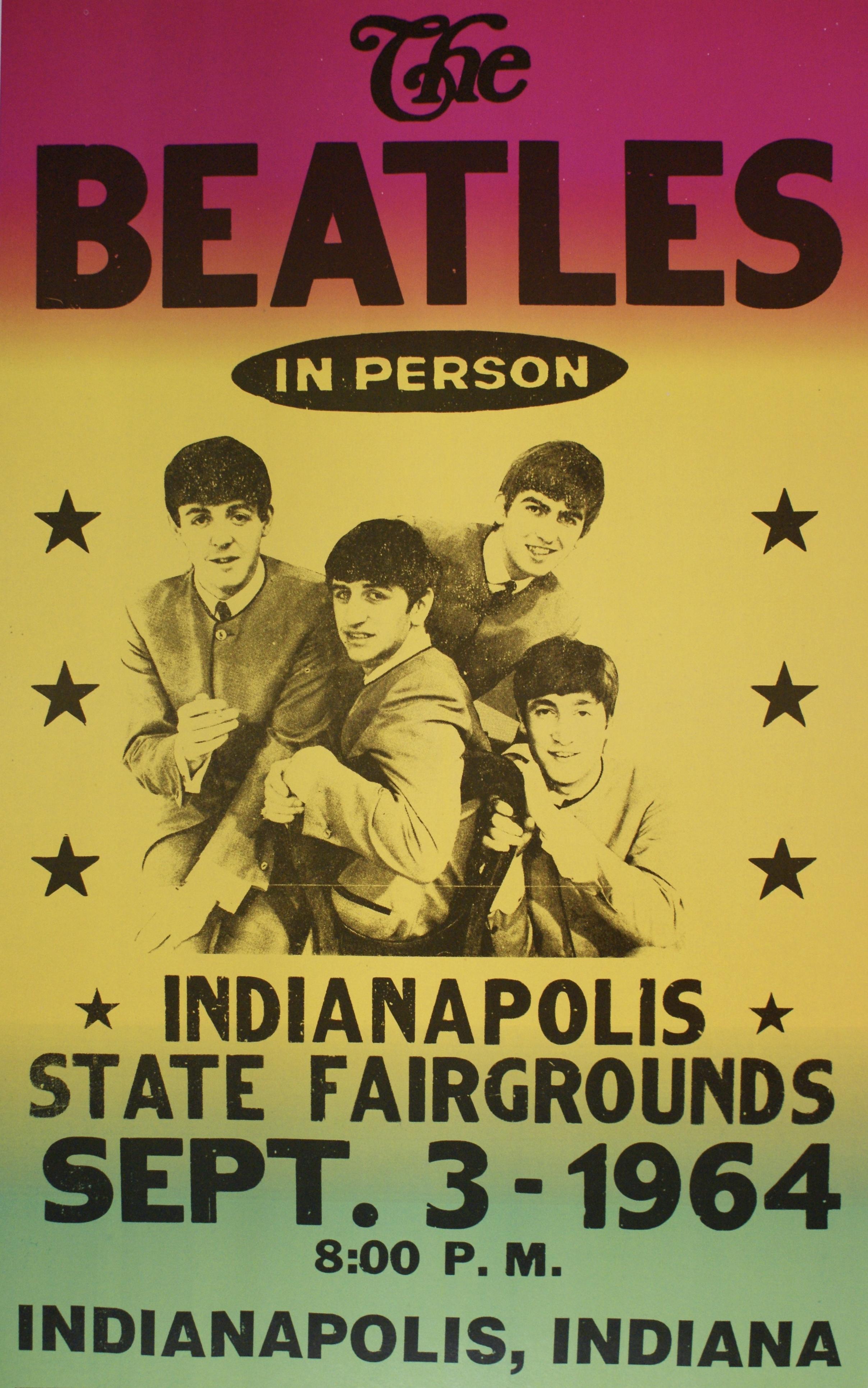
The agriculture board guided fair operations until 1925 when the Indiana General Assembly created the Indiana State Fair Board. A new fair board, established in 1947, included representatives elected from 11 agricultural districts and 5 members appointed by the governor.
The State Fairgrounds was again requisitioned for wartime use when the Army Air Forces used the grounds during World War II. From 1942-1944, the State Fair used a scaled-back version of the exposition with 4-H competitions only.
Musical entertainment has always been a significant part of the annual fair. During the late 19th and early 20th centuries, military bands, including John Philip Sousa’s, made numerous appearances. In recent decades, the fairgrounds hosted popular entertainers and musicians of the day, including the Beatles (September 3, 1964). It continues to offer a full schedule of popular and country-western performers.
The history of the state fairgrounds also includes tragedies. On October 31, 1963, 74 people died and at least 400 more were injured when a propane tank in the concession area ignited and exploded during a holiday ice show. The remains one of the worst disasters in Indianapolis history. More recently, a temporary stage structure collapsed due to strong wind gusts from an oncoming storm before the performance of popular country music group Sugarland, on August 13, 2011. Seven people died from the collapse and 58 were injured.
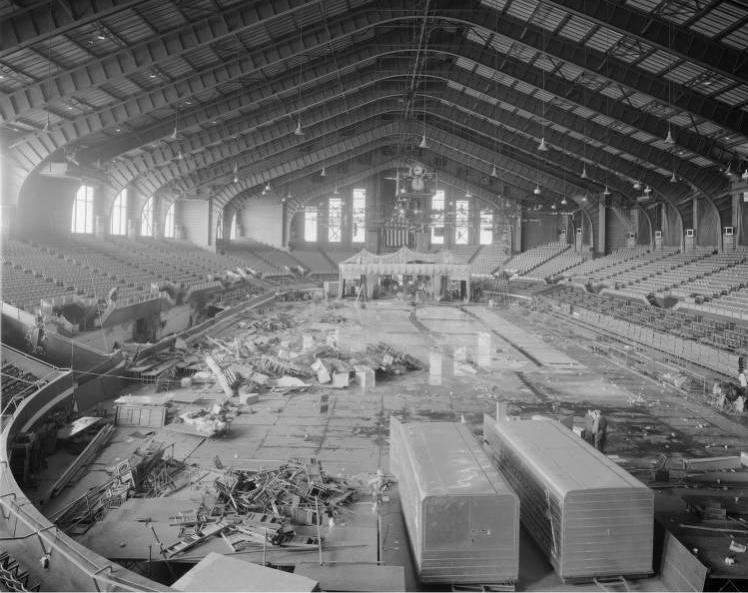
In 1983, the , formerly based out of Noblesville, introduced the FairTrain, which carried fairgoers on restored railroad cars to the fairgrounds. The museum transported approximately 10,000 passengers to the fair each year until it was discontinued in 2016 because of safety issues.
By the 1980s, financial problems and deteriorating conditions plagued the fairgrounds. Acting on a December 1989 recommendation from the Indiana State Advisory Commission, the Indiana General Assembly abolished the old fair board (1990) and created in its stead the Indiana State Fair Commission to operate the fairgrounds and an Indiana State Fair Committee (later renamed the Indiana State Fair Board) to run the annual State Fair.
In 1990, with the advent of the new Commission, the Indiana State Fairgrounds began hosting year-round events. Many venues have undergone renovations and upgrades to accommodate the ability to use the site for conventions, consumer shows, sports, concerts, fairs, exhibitions, meetings, weddings, banquets, and retreats.
A $63 million multi-year renovation, started in 2012 and completed in 2014, rejuvenated the art deco exterior of the Coliseum and completely restructured its interior. Part of the project included a $10 million Youth Arena which opened in 2013. The 30,000-square-foot facility stood in for the Coliseum hosting livestock events until 2014. At the time, the renovations marked the largest capital improvement project in the fairgrounds’ history, funded mostly by bonds and in part by a $10 million capital campaign.
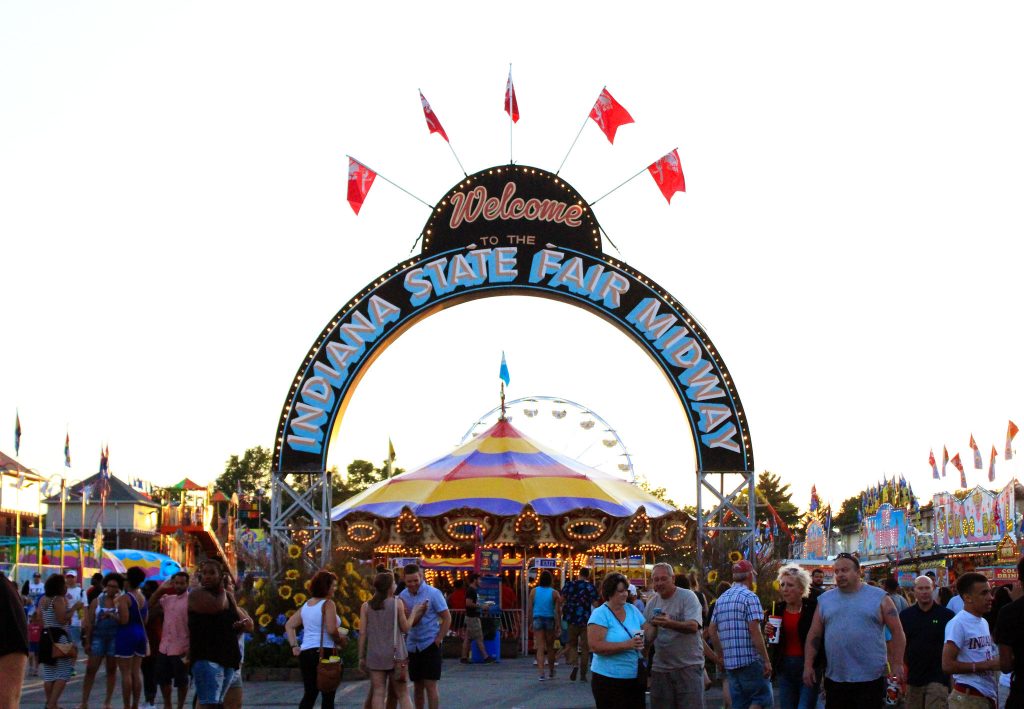
In 2019 the mile-long oval track used for auto races was converted to a harness racing facility with an all-weather surface of crushed limestone. The infield was eliminated to make room for additional parking. The Indiana State Fair used the renovated track to host the Standardbred Fair Racing Circuit Finals on August 7, 2019.
The historic swine barn at the State Fair was slated for a $50 million renovation in 2020. Those plans were delayed until July 2, 2021, when the State Fair announced the state of Indiana finally released the funds to replace the swine barn, constructed in 1923, with a multi-use facility that will accommodate large sporting events. The new structure, to be completed by the start of 2023 and named the Fall Creek Pavillion, will include exterior restoration of the original swine barn with a new multi-use structure attached to it. This conversion marks the sixth livestock facility to be reconfigured to a multi-use structure since 1990. The Indiana State Fair hosts about 400 events other than the fair each year.
On June 4, 2020, the Indiana State Fair Commission and Indiana State Fair Board announced the cancellation of the fair due to the ongoing COVID-19 pandemic. For the second time in its history, the fair was replaced with a modified 4-H Livestock Show held on weekends from August 7, 2020-September 5, 2020. The fair returned in 2021 for 18 days from July 30-August 17.
As the sixth oldest state fair in the nation and winner of the 1952 “Finest Agricultural Fair in the Nation” trophy, the Indiana State Fair has been an important asset to the state and the community. A 1990-1991 economic impact study of the fairgrounds’ contribution to Indianapolis even showed over $609 million in total direct and indirect sales and a total fairgrounds visitation in excess of 5 million. By the late 2010s, the state fair continued to show signs of growth. Over 17 days of operation in 2019, the event brought in 879,000 guests.

Help improve this entry
Contribute information, offer corrections, suggest images.
You can also recommend new entries related to this topic.
